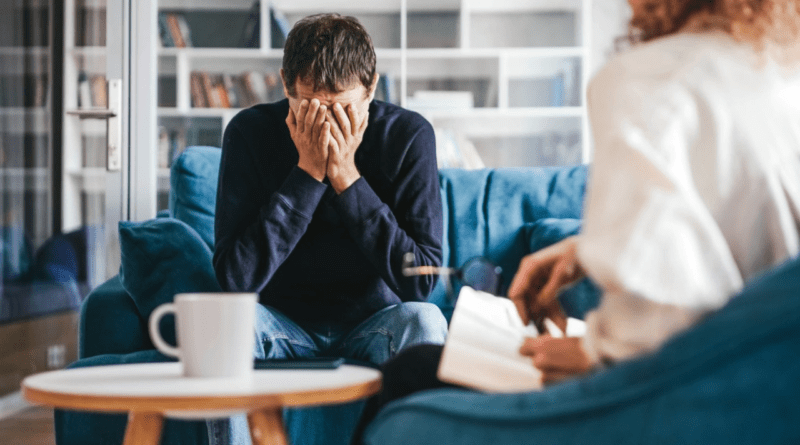How Hoarding Affects Your Emotions
Hoarding is more than just clutter. It’s a complex behavioral and emotional issue that often stems from deep-seated fears, anxieties, or trauma. While it may appear to be a matter of holding onto things, hoarding can have profound effects on your emotional well-being. Let’s explore the emotional consequences of hoarding and why addressing this issue is crucial for mental health.
The Emotional Roots of Hoarding
Hoarding behavior often originates from emotional experiences. People may hoard items because of:
- Fear of Scarcity: This fear, often rooted in past experiences of deprivation, leads individuals to hold onto items as a safeguard against future need.
- Sentimental Attachment: Objects may hold emotional significance, making it difficult to let go even if they no longer serve a practical purpose.
- Control Issues: For some, hoarding provides a sense of control, especially when other areas of life feel chaotic or unpredictable.
- Anxiety and Perfectionism: Hoarders may fear making a wrong decision about what to keep or discard, leading to procrastination and accumulation.
How Hoarding Impacts Your Emotions
While hoarding may offer temporary relief or comfort, it often exacerbates emotional distress over time. Here’s how:
1. Increased Anxiety
Ironically, the very act of hoarding often fuels the anxiety it seeks to soothe. Piles of belongings can create a chaotic environment, which can heighten stress levels. The thought of organizing or discarding these items may feel overwhelming, perpetuating a cycle of avoidance and anxiety.
2. Feelings of Shame and Guilt
Hoarding can lead to embarrassment about one’s living conditions, especially when others notice the clutter. This often results in social isolation, as individuals may avoid inviting friends or family over. Guilt over the inability to manage possessions or the effect on loved ones can further damage self-esteem.
3. Overwhelming Stress
The clutter caused by hoarding often creates a constant sense of unease. Navigating through messy spaces or searching for misplaced items adds to daily stress. Over time, this chronic stress can lead to burnout and physical health issues.
4. Depression and Loneliness
The emotional toll of hoarding can lead to depression. The isolation caused by shame or the inability to create a clean, welcoming home environment can contribute to feelings of loneliness. In severe cases, hoarding may even impair the ability to perform basic daily tasks, deepening the sense of despair.
5. Conflict in Relationships
Hoarding doesn’t just affect the individual; it often strains relationships. Family members or roommates may feel frustrated or helpless, leading to frequent arguments. The emotional disconnect caused by clutter can erode bonds over time.
The Vicious Cycle of Hoarding and Emotions
Hoarding and emotional distress often reinforce one another. Negative emotions such as anxiety, shame, or depression can trigger hoarding behaviors, while the consequences of hoarding exacerbate these feelings. Breaking this cycle requires addressing both the emotional and behavioral aspects of hoarding.
Steps to Address Hoarding and Improve Emotional Health
If you or someone you know struggles with hoarding, there are ways to address the issue and reclaim emotional well-being:
1. Seek Professional Help
Therapies such as Cognitive Behavioral Therapy (CBT) can help identify the emotional triggers behind hoarding and develop healthier coping mechanisms. A mental health expert can offer personalized support that addresses specific requirements.
- For In-Person Therapy: Visit Psychowellness Centre, home to a team of highly skilled top psychologists specializing in behavioral and emotional issues, including hoarding. The center offers a compassionate and collaborative approach to therapy, ensuring tailored treatment plans for every individual.
- For Online Support: TalktoAngel provides convenient access to licensed therapists. Whether you’re struggling with hoarding or other emotional challenges, their platform connects you with professionals who offer expert and empathetic care.
2. Start Small
Overcoming hoarding doesn’t happen overnight. Start by organizing compact spaces, such as an individual drawer or a shelf. Celebrate each accomplishment to build momentum.
3. Practice Mindfulness
Mindfulness techniques can help you manage anxiety and make more deliberate decisions about your possessions. This practice encourages awareness of your emotional responses without judgment.
4. Set Realistic Goals
Break down the decluttering process into manageable steps. Setting achievable goals can prevent feelings of overwhelm and create a sense of progress.
5. Build a Support System
Discuss your experiences with reliable friends or family members. Their encouragement and understanding can provide emotional relief and motivation.
Psychowellness Centre: Experts You Can Trust
Psychowellness Centre is home to a team of distinguished psychologists who specialize in a wide range of emotional and behavioral issues, including hoarding. Some of the highly skilled professionals at the center include:
- Dr. R. K. Suri: A Chartered Clinical Psychologist with over 40 years of expertise in hypnotherapy, psychoanalysis, and neuropsychological assessment.
- Mrs. Kala Sengupta: An RCI licensed Clinical Psychologist with 33 years of experience in child development and behavioral issues.
- Ms. Gurleen Kaur: Specializes in addiction, adjustment disorders, and anxiety.
- Ms. Riya Rathi: Focuses on anxiety, depression, and trauma.
- Ms. Sudipta Das: Skilled in CBT, mindfulness, and stress management.
- Ms. Srishti Jain: Specializes in self-concerns and relationship issues.
- Ms. Tanu Sangwan: Focuses on emotional well-being and holistic therapy approaches.
Conclusion
Hoarding is not just about the physical accumulation of objects; it’s deeply tied to emotional health. The clutter can create chaos in both your space and your mind, leading to anxiety, guilt, and depression. By understanding the emotional roots of hoarding and taking proactive steps to address it, you can break free from the cycle and create a more balanced, fulfilling life. Remember, seeking help is not a sign of weakness but a courageous step toward healing and self-care.
To begin your journey to emotional well-being, consider reaching out to Psychowellness Centre for in-person therapy or TalktoAngel for online counseling. Their experienced professionals can guide you through the process with empathy and expertise.
References
- American Psychiatric Association. (2013). Diagnostic and statistical manual of mental disorders (5th ed.). Arlington, VA: American Psychiatric Publishing.
- Frost, R. O., & Steketee, G. (2010). Stuff: Compulsive hoarding and the meaning of things. Houghton Mifflin Harcourt.
- Tolin, D. F., Frost, R. O., & Steketee, G. (2007). Buried in treasures: Help for compulsive acquiring, saving, and hoarding. Oxford University Press.
- World Health Organization. (2019). ICD-11 for Mortality and Morbidity Statistics (ICD-11 MMS). Retrieved from https://icd.who.int/en




